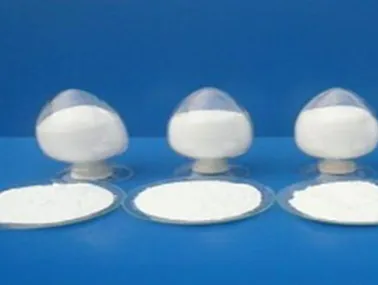
Exploring the Versatility and Benefits of 472e Emulsifier in Food Technology
Understanding 472e Emulsifier A Key Ingredient in Modern Food Production
In the ever-evolving world of food science and technology, emulsifiers play a vital role in improving the texture, stability, and overall quality of food products. One such emulsifier that has garnered attention in both industrial and consumer circles is the 472e emulsifier. This article will delve into the characteristics, applications, and significance of 472e emulsifier in modern food production.
What is 472e Emulsifier?
472e emulsifier, also known as mono- and diglycerides of fatty acids (E472e), is a food additive that is derived from natural sources, including plant oils and animal fats. As an emulsifier, it facilitates the mixing of hydrophilic (water-loving) and hydrophobic (water-repelling) ingredients, which is particularly beneficial in products where stable mixtures are desired. This emulsifier is classified as a food-grade additive, approved for use in many countries due to its safety profile and effectiveness.
Characteristics of 472e Emulsifier
472e emulsifier features unique physicochemical properties that make it ideal for food applications. It is highly soluble in fats and oils, allowing it to interact effectively with various food components. This emulsifier has a neutral taste and odor, which means it does not alter the flavor profile of the food products in which it is used. Additionally, it is capable of forming stable emulsions, which are critical in products such as mayonnaise, salad dressings, and sauces.
Applications in Food Industry
The versatility of 472e emulsifier makes it suitable for a wide range of food applications. Here are some key areas where it is commonly used
1. Baked Goods In the production of bread, cakes, and pastries, 472e emulsifier helps improve dough stability, texture, and volume. It contributes to a softer crumb structure and extends the shelf life of baked products by reducing staling.
472e emulsifier

2. Dairy Products 472e emulsifier is frequently employed in ice creams, margarine, and cream cheeses. It aids in achieving a smooth texture and prevents the separation of fat and water phases, enhancing the overall mouthfeel of dairy items.
3. Confectionery In chocolates and candy, this emulsifier promotes even fat distribution, preventing the formation of undesirable grainy textures. It also assists in stabilizing emulsions in creamy fillings and coatings.
4. Sauces and Dressings 472e emulsifier ensures the homogeneous blending of ingredients in sauces and salad dressings, preventing the separation of oil and vinegar-based components. This stability is crucial for both aesthetics and taste.
5. Processed Foods Many convenience foods, such as ready-to-eat meals and snacks, incorporate 472e emulsifier to improve texture, enhance creaminess, and maintain product integrity during storage and heating.
Health and Safety Considerations
The safety of 472e emulsifier has been extensively studied, with regulatory bodies such as the FDA and EFSA deeming it safe for consumption when used within recommended levels. Unlike some synthetic emulsifiers, 472e is derived from natural sources, which may appeal to health-conscious consumers. However, as with any food additive, moderation is key.
Conclusion
In summary, 472e emulsifier is a crucial ingredient in the food industry, providing numerous benefits ranging from improved texture to enhanced stability in a wide variety of products. As consumer preferences shift towards cleaner labels and natural ingredients, the demand for emulsifiers like 472e is likely to grow. Understanding the role and functionality of this versatile additive helps both manufacturers and consumers appreciate the science behind food production, ensuring that we continue to enjoy high-quality and satisfying food products.
-
Understanding Synthetic Rubber OptionsNewsApr.27,2025
-
Trichloroisocyanuric Acid: Essential for Clean and Safe WaterNewsApr.27,2025
-
Sodium Dichloroisocyanurate: Key to Safe Water TreatmentNewsApr.27,2025
-
Sodium Acid Pyrophosphate: Essential in Modern Food ProcessingNewsApr.27,2025
-
Essential Water Treatment ChemicalsNewsApr.27,2025
-
Denatured Alcohol and Its Industrial UsesNewsApr.27,2025
-
The Versatile Uses of Sodium BicarbonateNewsApr.24,2025
Hebei Tenger Chemical Technology Co., Ltd. focuses on the chemical industry and is committed to the export service of chemical raw materials.
-

view more DiethanolisopropanolamineIn the ever-growing field of chemical solutions, diethanolisopropanolamine (DEIPA) stands out as a versatile and important compound. Due to its unique chemical structure and properties, DEIPA is of interest to various industries including construction, personal care, and agriculture. -

view more TriisopropanolamineTriisopropanolamine (TIPA) alkanol amine substance, is a kind of alcohol amine compound with amino and alcohol hydroxyl, and because of its molecules contains both amino and hydroxyl. -

view more Tetramethyl Thiuram DisulfideTetramethyl thiuram disulfide, also known as TMTD, is a white to light-yellow powder with a distinct sulfur-like odor. It is soluble in organic solvents such as benzene, acetone, and ethyl acetate, making it highly versatile for use in different formulations. TMTD is known for its excellent vulcanization acceleration properties, which makes it a key ingredient in the production of rubber products. Additionally, it acts as an effective fungicide and bactericide, making it valuable in agricultural applications. Its high purity and stability ensure consistent performance, making it a preferred choice for manufacturers across various industries.











